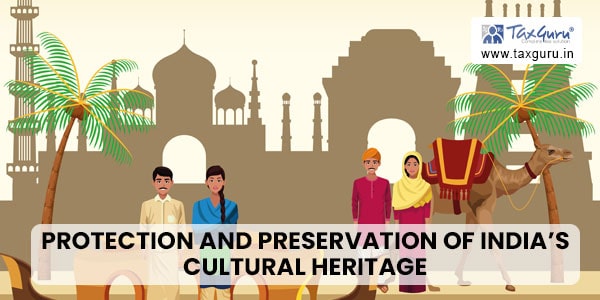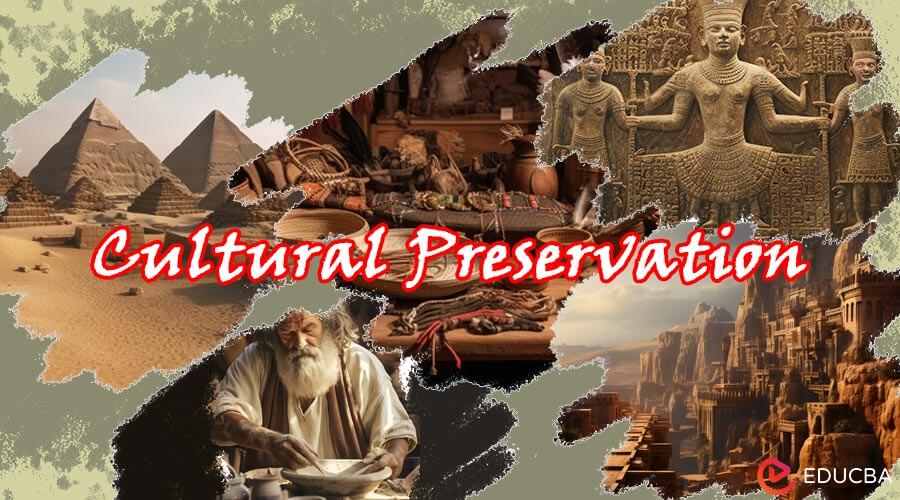
The Digital Guardians: How Technology Aids Cultural Preservation
In an era defined by rapid change and interconnectedness, the threads of human history, tradition, and identity – collectively known as culture – face both unprecedented opportunities and existential threats. From ancient languages whispered by a dwindling few to monumental architectural wonders vulnerable to conflict or decay, the world’s cultural heritage is a fragile tapestry. Yet, a powerful ally has emerged in this preservation effort: technology. Far from being a force that homogenizes or erodes culture, technology has become an indispensable tool, transforming how we document, share, protect, and even revitalize the invaluable legacies of humankind.
The journey of cultural preservation has historically been a painstaking one, relying on physical archiving, oral transmission, and the diligent work of scholars and artisans. Today, digital innovations have revolutionized every facet of this endeavor, creating a global, accessible, and resilient infrastructure for safeguarding our past for future generations.
Digitization: The Foundation of Digital Memory
At the core of technology’s contribution lies digitization – the process of converting cultural artifacts, records, and expressions into digital formats. This seemingly simple act has profound implications. Libraries, archives, and museums worldwide are engaged in monumental projects to scan ancient manuscripts, photograph delicate artifacts, record oral histories, and digitize historical documents.
Consider the British Library’s "Save Our Sounds" programme, an ambitious project aimed at digitizing over 6.5 million recordings by 2020 to prevent them from becoming obsolete. Magnetic tapes, fragile shellac discs, and decaying vinyl hold irreplaceable narratives, music, and spoken word. Without digital conversion, these voices would literally fade into silence. As Dr. Andy Armstrong, Project Manager for Unlocking Our Sound Heritage at the British Library, notes, "Sound is a powerful and unique way of understanding our history and culture, but it’s also incredibly vulnerable. Digitization is our only real hope of preserving it."

Beyond mere textual and auditory records, advanced imaging techniques like photogrammetry and 3D scanning are creating incredibly detailed digital replicas of physical objects and even entire archaeological sites. Institutions like CyArk leverage these technologies to capture the intricate details of endangered heritage sites, from the ancient city of Bagan in Myanmar to the rock-hewn churches of Lalibela in Ethiopia. These digital twins serve multiple purposes: they act as precise records for conservation, allow for virtual exploration when physical access is difficult or dangerous, and provide invaluable data for reconstruction should a site be damaged or destroyed. The digital reconstruction of Palmyra, a UNESCO World Heritage site devastated by conflict, stands as a poignant testament to this capability, allowing researchers and the public to experience its grandeur virtually.
Global Accessibility: Democratizing Culture
Perhaps one of technology’s most transformative impacts is its ability to break down geographical and social barriers to cultural heritage. The internet has become the world’s largest museum, library, and archive, making previously inaccessible collections available to anyone with an internet connection.
Platforms like Google Arts & Culture are exemplary in this regard. Partnering with over 2,000 cultural institutions globally, it offers high-resolution images of artworks, virtual tours of museums, and interactive narratives about historical events and cultural traditions. A student in a remote village can now virtually walk through the halls of the Louvre, examine Van Gogh’s brushstrokes up close, or learn about ancient Egyptian rituals – experiences once reserved for a privileged few. This democratization of access fosters a deeper understanding and appreciation of diverse cultures, promoting empathy and global citizenship.
Open access initiatives further amplify this effect. Projects like Project Gutenberg offer tens of thousands of free e-books, ensuring that literary heritage, particularly works in the public domain, remains freely available to all. Similarly, digital archives of Indigenous languages, oral traditions, and historical records are empowering communities worldwide to reconnect with their heritage and share it on their own terms.
Language Preservation: Giving Voice to the Vulnerable
Language is arguably the most fundamental carrier of culture, embodying unique worldviews, histories, and knowledge systems. Tragically, a language dies every two weeks, taking with it irreplaceable cultural insights. Technology offers a vital lifeline for these endangered tongues.
Digital dictionaries, language learning apps, and online archives are providing critical tools for documentation and revitalization. Projects like FirstVoices.com, an initiative by the First Peoples’ Cultural Council in British Columbia, Canada, allows Indigenous communities to build and maintain their own online language archives, complete with pronunciation guides, phrases, songs, and stories. This empowers speakers, especially younger generations, to learn and practice their ancestral languages, fostering a sense of identity and cultural pride.
Artificial intelligence (AI) is also beginning to play a role. Machine learning algorithms can analyze linguistic patterns, assist in translation, and even generate synthetic speech, potentially helping to reconstruct and teach languages with few remaining native speakers. While these tools are not a substitute for human interaction, they offer powerful support in the race against time to preserve linguistic diversity. As the late linguist Michael Krauss famously said, "When a language dies, a library burns." Technology is now providing digital fire insurance.

Revitalization and Engagement: Bringing Culture to Life
Beyond mere preservation, technology actively aids in the revitalization and dynamic engagement with cultural heritage. Virtual Reality (VR) and Augmented Reality (AR) are transforming how we experience and interact with the past. VR experiences can transport users to ancient Rome, allow them to participate in traditional ceremonies, or explore archaeological sites as they once were. AR applications, meanwhile, overlay digital information onto the real world, enriching museum visits with interactive exhibits or allowing users to see historical buildings reconstructed on their current sites through a smartphone screen.
Social media platforms, while often criticized for their superficiality, have also become powerful tools for cultural communities. Diaspora communities use them to connect, share traditions, and maintain cultural identity across vast distances. Local history groups organize virtual events, crowdsource information, and share forgotten stories. Citizen science initiatives, such as transcribing historical documents or tagging archaeological images, leverage the collective power of global volunteers, directly contributing to preservation efforts.
Protecting the Intangible: Beyond Physical Artifacts
Cultural preservation is not solely about physical objects; it encompasses intangible heritage – oral traditions, performing arts, social practices, rituals, festive events, and traditional craftsmanship. Technology is increasingly adept at capturing and disseminating these ephemeral forms.
High-definition video and audio recording equipment document intricate dance forms, musical performances, and storytelling sessions, preserving the nuances that written descriptions cannot convey. Interactive digital platforms can then host these recordings, accompanied by scholarly analysis and cultural context, making them accessible for research, education, and artistic inspiration. Think of projects documenting the ancient art of Noh theatre in Japan or the intricate weaving techniques of Andean communities – technology allows these living traditions to be studied and appreciated even as their practitioners evolve or face challenges.
Challenges and the Path Forward
While technology offers immense promise, it is not a panacea. Challenges remain, including the digital divide (unequal access to technology), the long-term sustainability of digital archives (digital obsolescence, "bit rot"), the ethical implications of digital representation (authenticity, ownership, interpretation), and the sheer volume of data requiring preservation. Funding, expertise, and international collaboration are crucial to overcome these hurdles.
However, the trajectory is clear. Technology has moved beyond being a mere assistant to becoming a fundamental partner in cultural preservation. From the silent scanning of ancient texts to the immersive virtual reality experiences of lost worlds, digital tools are ensuring that the stories, wisdom, and beauty of human culture endure. They are not just saving artifacts; they are empowering communities, fostering global understanding, and ultimately, safeguarding our collective human identity in an ever-changing world. The digital guardians are here, and their vigilance ensures that the echoes of our past will resonate far into the future.


